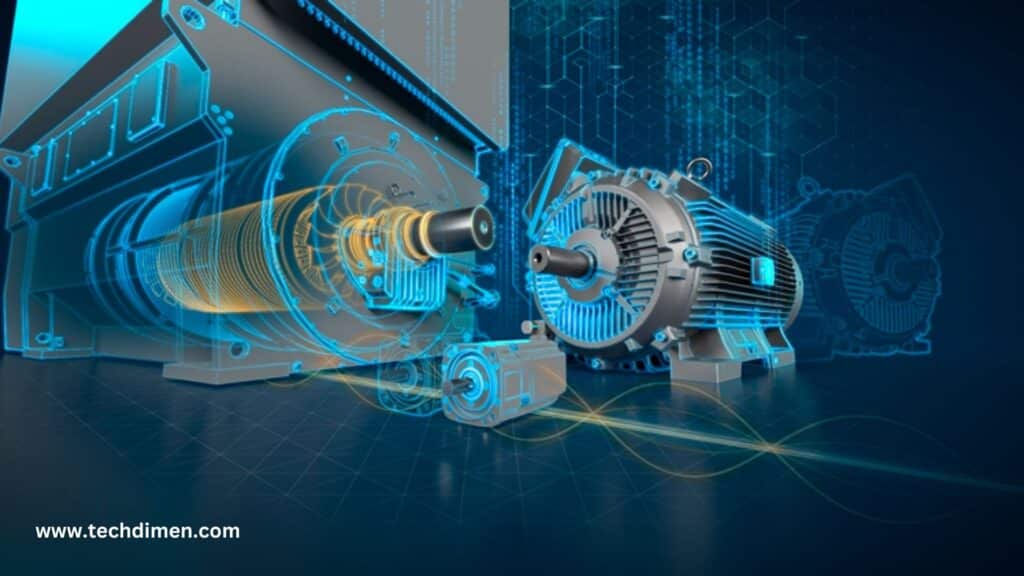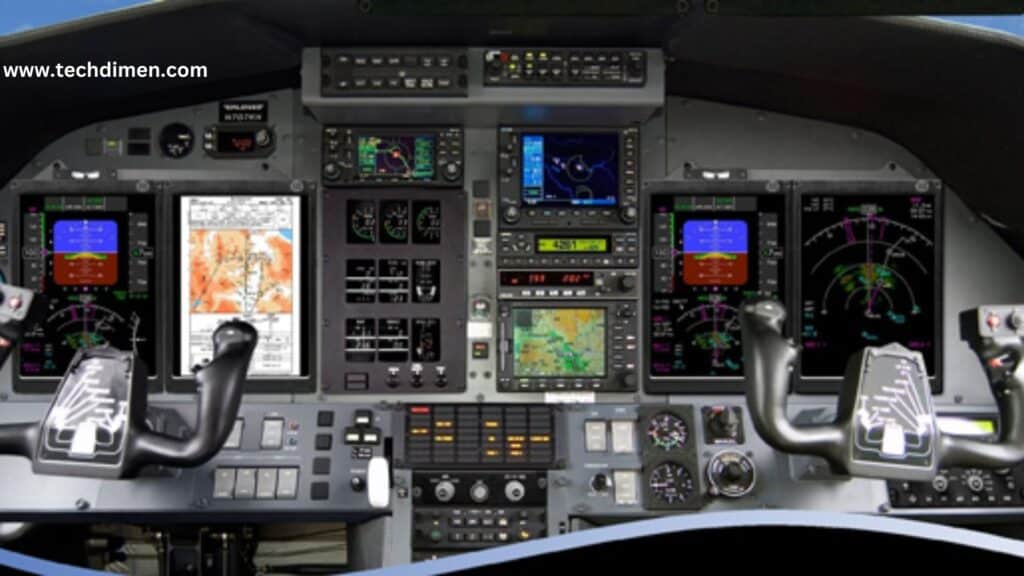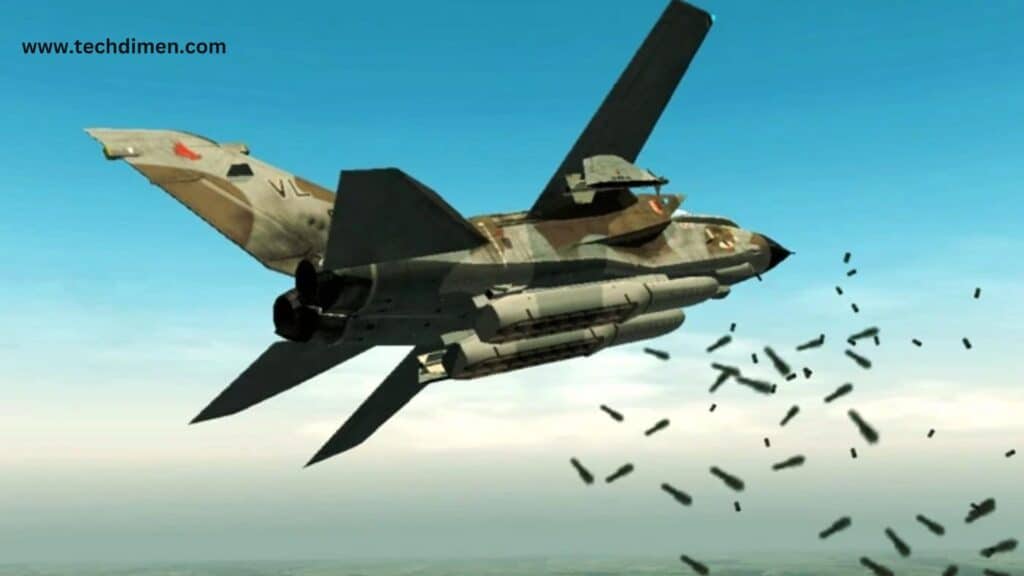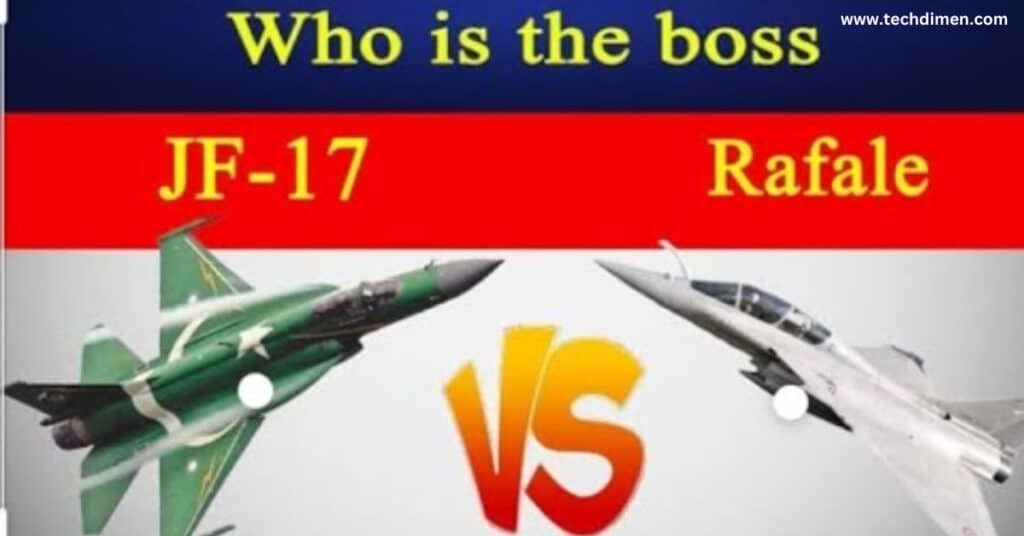The fast changing defense landscape of South Asia, especially between Pakistan and India, comparing fighter jets like the JF-17 Thunder Block-3 and Dassault Rafale isn’t just about performance it’s about strategic balance. Pakistan’s JF-17, co-developed with China, and India’s Rafale, sourced from France, reflect two national defense doctrines shaped by regional threats, economic realities, and global alliances.While JF 17 emphasizes affordability and modular upgrades, Rafale delivers elite performance with advanced tech, offering significant edge in electronic warfare, sensor fusion, and multirole versatility. This detailed comparison takes into account Pak vs Indian war scenarios, strategic deployments, and technological gaps JF 17 vs Rafale Technology.
Airframe and Structural Engineering
Materials and Construction
The JF-17 Block-3 incorporates aluminum alloys with limited use of composites, aimed at reducing cost and easing repairs. Rafale, with over 70% composite construction, enjoys a lighter frame, better corrosion resistance, and lower radar signature key for survivability in modern warfare.
Aerodynamics and Manoeuvrability
Rafale uses a delta-canard configuration, granting high agility, especially during dogfights or quick interceptions. JF 17 has a simpler cropped delta design, sacrificing some agility but enhancing mass production and low maintenance.
Stealth Characteristics
Rafale integrates Radar Absorbent Materials (RAM), internal shaping, and serrated edges for low observability. JF-17 Block 3 upgrade offers RCS reducing features but lacks true stealth.
| Feature | JF-17 Block-3 | Dassault Rafale |
|---|---|---|
| Composite Materials | 20% | 70% |
| Configuration | Cropped delta wing | Delta-canard |
| Stealth Features | Basic (Block-3) | Advanced RAM |
Engines and Power Systems JF-17 vs Rafale

Propulsion and Thrust
The JF 17 uses the single-engine RD-93, based on the MiG-29’s RD-33. It’s reliable but lacks raw power. Rafale’s twin Snecma M88 engines push out a combined 150 kN enabling superior thrust-to-weight ratios.
Supersonic Cruise (Supercruise)
Rafale can supercruise fly supersonically without afterburners making it harder to track and more fuel efficient. JF 17 requires afterburner, increasing heat and radar signature.
Range and Endurance
Rafale’s range nearly 3,700 km with external tanks enables deep strike missions, crucial in a potential India-Pakistan standoff. JF 17 has a range around 2,037 km, suitable for regional defense.
| Specification | JF-17 Thunder Block-3 | Dassault Rafale |
|---|---|---|
| Engine Type | RD-93 (Single) | Snecma M88 (Twin) |
| Total Thrust | 84.4 kN | 150 kN |
| Supercruise | No | Yes |
| Ferry Range | 2,037 km | 3,700 km |
Avionics and Combat Electronics

Radar: KLJ 7A AESA vs RBE2 AA
JF 17 Block-3’s KLJ-7A AESA radar is powerful for its class, tracking 15+ targets up to 170 km. Rafale’s RBE2-AA AESA, based on GaN modules, offers better ECCM, target recognition, and tracking crucial during jamming-rich environments like India-Pakistan conflicts.
| Radar Feature | KLJ-7A (JF-17) | RBE2-AA (Rafale) |
|---|---|---|
| Tech Type | GaAs AESA | GaN AESA |
| Max Range | 170 km | 200+ km |
| Targets Tracked | 15–20 | 40–50 |
Pilot Interface and Helmet Displays
Rafale uses HMD-T helmet technology, enabling off-boresight targeting. JF 17’s newer HMD is functional but lacks Rafale’s visual tracking speed and integration.
Sensor Fusion and Network Warfare
Rafale leads in sensor fusion, integrating IRST, radar, and EW systems. This holistic view gives pilots an edge in situational awareness, especially when dealing with multi target threats from Pakistani or Indian formations.
Electronic Warfare Dominance
Defensive Systems
Rafale’s SPECTRA suite is among the best in the world. It includes threat detection, jamming, and decoy systems. JF 17 uses modular Chinese-built ECMs with basic warning and jamming capacity. In a real Pak-India engagement, this could be decisive.
Tactical Data Links
Rafale supports NATO-standard Link-16, aiding joint operations with allies. JF 17 uses Link-17, functional but less compatible outside China’s network.
Weapons: Air Combat and Ground Attack

BVR and WVR Missiles
Rafale’s Meteor missile is a standout it offers a 150+ km range with a large no escape zone. JF 17 uses the PL-15E, estimated at 200–300 km range, though Meteor’s data link and guidance systems are more advanced.
Ground Attack Options
Rafale supports precision weapons like SCALP-EG cruise missiles and AASM bombs. JF 17’s CM 400AKG hypersonic missile and LS 6 PGMs make it deadly for anti ship and limited range strikes.
| Weapon Type | JF-17 Block-3 | Dassault Rafale |
|---|---|---|
| BVR Missile | PL-15E (200–300 km) | Meteor (150+ km, NEZ edge) |
| WVR Missile | PL-5EII | MICA IR/EM |
| Ground Strike | CM-400AKG, LS-6 | SCALP-EG, AASM |
the World Deployment: JF-17 vs Rafale or India vs Pakistan
Strategic Use in South Asia
India’s Rafales are stationed near the Pakistani border, providing quick access to Line of Control (LoC) and deep-strike reach into Pakistani territory. Pakistan has rapidly upgraded its JF 17 fleet in response, focusing on cost-effective deterrence.
Lessons from Balakot and Skirmishes
The 2019 Balakot airstrike and ensuing dogfight spotlighted air superiority challenges. India’s Mirage 2000s and Su 30MKIs played key roles. Rafale, inducted later, significantly raised India’s precision strike capacity. Pakistan’s JF 17s have since received upgrades aimed at countering Indian electronic warfare and radar.
Export Influence and Global Presence
Rafale is combat tested across Europe, Africa, and the Middle East. JF 17 presence in Nigeria, Myanmar, and Iraq reflects its appeal to mid tier defense budgets.
Final Assessment
| Capability Area | JF-17 Thunder Block-3 | Dassault Rafale |
|---|---|---|
| Radar Tech | Good AESA (GaAs) | Advanced AESA (GaN) |
| Engine Performance | Single, mid-range thrust | Twin, high performance |
| Stealth | Basic (Block-3) | Passive advanced |
| EW Suite | Modular ECM | Full SPECTRA |
| BVR Capability | PL-15E ( 300 km) | Meteor (150+ km NEZ) |
| Strategic Reach | Regional (2,000+ km) | Deep strike (3,700 km) |
| Cost Efficiency | Very high | Low |
| Combat Proven | Limited | Extensive |
FAQs: JF-17 vs Rafale
How did the Rafale perform in the 2025 India Pakistan conflict?
The Rafale demonstrated exceptional capabilities during the 2025 clashes. Its precision strike ability, long-range radar, and advanced electronic warfare suite (SPECTRA) allowed Indian forces to neutralize high-value targets with minimal exposure. The Rafale also proved highly effective in network centric warfare, coordinating seamlessly with AWACS and satellite intelligence for deep penetration strikes beyond the LoC.
Was the JF 17 Thunder Block 3 effective in real combat?
Yes, the JF-17 Block-3 played a critical role for Pakistan in 2025. Its agility, cost-efficiency, and fast turnaround times allowed it to scramble quickly for interceptions. Despite having a single engine and less stealth, it performed well in defensive and swarm missions, particularly when armed with the long-range PL 15E missiles.
Which fighter jet had the better radar performance?
Rafale held a clear edge with its RBE2-AA AESA radar, based on Gallium Nitride (GaN) technology. This radar offered superior target tracking, faster data fusion, and higher resistance to jamming. The JF-17’s KLJ-7A radar, while respectable and upgraded with AESA capability, fell slightly short in tracking multiple targets under jamming conditions.
How do their BVR missile systems compare?
Both aircraft fielded impressive beyond-visual-range (BVR) missiles. The Rafale’s Meteor missile had a shorter range on paper compared to the JF-17’s PL-15E, but its high no-escape zone and superior resistance to electronic countermeasures gave it an edge in real-world engagements. The PL-15E offered longer range but had a larger margin for evasion at maximum range.
Is the JF-17 Block-3 still considered cost effective after 2025?
Absolutely. Despite facing a technically superior opponent, the JF-17 Thunder Block-3 proved its value. Its low operational cost enabled Pakistan to deploy it in higher numbers, maintaining a persistent presence in contested airspace. The aircraft’s modular architecture also allowed quick adaptations to changing battle conditions.
What role did stealth technology play in the 2025 war?
Stealth shaped the outcome of several critical missions. The Rafale’s passive stealth features, such as composite materials and radar-absorbing surfaces, reduced early detection and allowed deeper strikes without triggering Pakistani interceptors. The JF-17 lacked extensive stealth shaping but compensated with speed, maneuverability, and electronic countermeasures.
How crucial was electronic warfare during the Indo Pak 2025 conflict?
It was a game-changer. Rafale’s SPECTRA system provided jamming, deception, and situational awareness that disrupted enemy radars and missile lock-ons. Pakistani forces responded with newly upgraded ECMs on the JF-17, which worked well in localized engagements but didn’t match the full-spectrum capabilities of Rafale’s suite.
Did one jet dominate the air war?
Technologically, the Rafale outperformed the JF-17 in several domains including sensors, survivability, and range. However, the JF-17’s numerical advantage, quick response capability, and cost-effectiveness prevented Indian air superiority from going unchallenged. Both jets performed their respective doctrinal roles effectively.
What were the biggest lessons both air forces learned?
India saw firsthand the value of sensor fusion and stealth for strike dominance, reinforcing the need for a multirole fleet built around modern avionics. Pakistan learned that quantity, modularity, and affordability can delay or dilute technological superiority. Both sides are likely to invest further in networked warfare, data fusion, and next-generation platforms.
Conclusion:JF-17 vs Rafale
In a Pakistan vs India war scenario, Rafale offers air dominance with long-range strike and superior survivability. It fits India’s doctrine of surgical strikes and high-tech deterrence. The JF-17, on the other hand, provides Pakistan with a cost-effective, scalable fleet capable of saturation attacks and defensive missions.
Neither jet wins in every category. The real story lies in how they’re used and in the case of South Asia, how technology, politics, and geography shape their deployment.

Jhon AJS is a tech enthusiast and author at Tech Dimen, where he explores the latest trends in technology and TV dimensions. With a passion for simplifying complex topics, Jhon aims to make tech accessible and engaging for readers of all levels.







